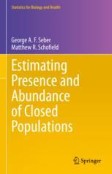Search
Search Results
-
Estimating body condition of Apennine brown bears using subjective scoring based on camera trap photographs
The assessment of animal body condition has important practical and management implications for endangered wildlife populations. The nutritional...

-
Trunks and treetops: integrating terrestrial and arboreal camera-trap surveys to document elusive mammal communities in India
Tropical rainforest canopies harbor nearly half of the world’s biodiversity. Previous research on rainforest ecosystems has primarily focused on the...

-
The DeepFaune initiative: a collaborative effort towards the automatic identification of European fauna in camera trap images
Camera traps have revolutionized how ecologists monitor wildlife, but their full potential is realized only when the hundreds of thousands of...

-
Successful invasion: camera trap distance sampling reveals higher density for invasive raccoon dog compared to native mesopredators
Monitoring population parameters of invasive species gains importance as these species continue to expand all over the world. Monitoring of invasive...

-
Inter-observer variance and agreement of wildlife information extracted from camera trap images
Camera traps are a popular tool in terrestrial wildlife research due to their low costs, easy operability, and usefulness for studying a wide array...

-
Estimating the density of small mammals using the selfie trap is an effective camera trap** method
Camera trap** to study wildlife allows for data collection, without the need to capture animals. Traditionally, camera traps have been used to...

-
Cheetah spatiotemporal overlap with other large carnivores and prey at camera-trap sites: do they fit the niche-complementarity hypothesis?
In guilds, such as the large predators, species compete over multiple resources that are both consumable and non-consumable. The niche complementary...

-
Leopard Panthera pardus camera trap surveys in the arid environments of northern Namibia
In Namibia, leopards ( Panthera pardus ) are widely distributed, used commercially as trophy animals and are often persecuted for perceived or real...

-
Using camera trap bycatch data to assess habitat use and the influence of human activity on African elephants (Loxodonta africana) in Kasungu National Park, Malawi
African elephants ( Loxodonta africana ) are increasingly exposed to high levels of human disturbance and are threatened by poaching and human–elephant...

-
Camera traps strengthen inference about endangered beach mouse activity
Endangered species recovery requires knowledge of species abundance, distribution, habitat preferences, and threats. Endangered beach mouse...

-
Empirical evaluation of the spatial scale and detection process of camera trap surveys
BackgroundCamera traps present a valuable tool for monitoring animals but detect species imperfectly. Occupancy models are frequently used to address...

-
Assessing the detectability of the Irish stoat Mustela erminea hibernica using two camera trap-based survey methods
Monitoring small mustelids like weasels Mustela nivalis and stoats M. erminea is challenging as they are rarely seen, leave scant field signs and...

-
Invasive mammal control selects for trap-recalcitrant behaviour and personality
Kill-trap** is an important management tool for suppressing invasive mammalian predator populations in New Zealand, including the common brushtail...

-
spaceNtime: an R package for estimating abundance of unmarked animals using camera-trap photographs
The space to event (STE), time to event (TTE), and instantaneous sampling (IS) methods were developed to estimate abundance of unmarked animals from...

-
Density and abundance estimation of unmarked ungulates using camera traps in the Mudumu National Park, Namibia
Density and abundance estimates are critical to effective wildlife management and are essential for monitoring population trends and setting...

-
Comparing direct (live-trap**) and indirect (camera-trap**) approaches for estimating the abundance of weasels (Mustela nivalis)
Information on the presence and abundance of a species is crucial for understanding key ecological processes but also for effective protection and...

-
Spatial and Camera Methods
Estimating abundance using capture-recapture methods for animals that move around in a closed population can be difficult. One way of dealing with...
-
Towards automatic monitoring of insect pests using IoT camera-equipped pheromone traps: a case study for Spodoptera litura (Lepidoptera: Noctuidae)
To efficiently monitor insect pests, we developed an electronic device that incorporates a pheromone trap and an Internet of things (IoT) camera...

-
Using Camera-Trap Data to Simultaneously Estimate Jaguar (Panthera onca) Density and Resource Selection in the Paraguayan Dry Chaco
Habitat loss and human-caused mortality have led to an approximate 50% reduction of the distribution of the jaguar (Panthera onca). The large...
-
Examining primate community occurrence patterns in agroforest landscapes using arboreal and terrestrial camera traps
ContextForest-agricultural mosaics are now considered critical for biodiversity. Within these landscapes, the type of land use surrounding remnant...

